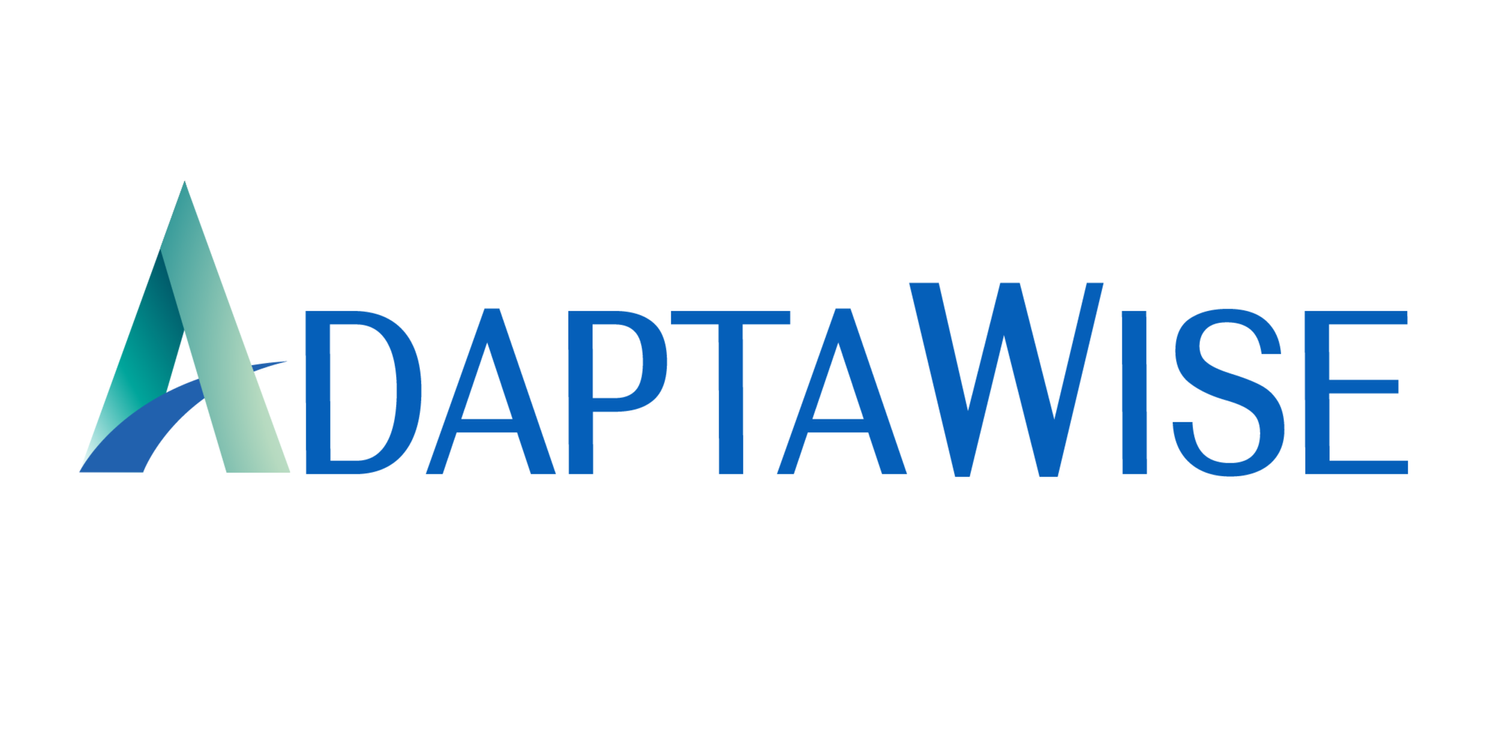MY SERVICES
Clients I Serve
In business, people are often the problem — and always part of the solution.
This insight drives my work across a diverse client base.
I partner with businesses across various sectors — from utilities, construction, and manufacturing to finance, professional services, and technology startups. Many are family-owned enterprises where conflicts may be more pronounced. Many others use the Entrepreneurial Operating System (EOS) framework which can bring ‘people issues’ to light.
What connects these different organizations is a shared commitment to cultivating stronger leaders and teams. Many wait longer than they should before reaching out, but when they do, it's because they genuinely value their people and want to resolve persistent people issues that are slowing them down — whether in the leaders themselves, in their leadership teams, or both.
My value lies in partnering with leaders and teams to understand the complexities of human dynamics and leverage them effectively to create value and drive results.
Business leaders I partner with appreciate this approach, as they're invested in developing their team's potential and maintaining cultures where collaborative problem-solving thrives.

Who and How I Help
01
Visionaries/ CEOs
Support for founders and CEOs navigating the hidden challenges of leadership — turning complexity into clarity so they can lead with focus, stay out of overwhelm, and operate at their best.
02
Leadership Teams
Systemic coaching for leadership teams to improve communication, alignment, and execution — so the team works better together and consistently drives results across the business.
03
Partnerships + Family Businesses
Guided support for business partners to strengthen trust, clarify roles, navigate tough conversations, and plan for what’s next — so the partnership (and succession) works as well as the business itself.
WHO I HELP — 01 | EXECUTIVE LEADERS
Individual Leaders - The Visionary / CEO
Business owners, founders, and other visionary leaders are often challenged in some common ways:
feeling overwhelmed by the sheer number of projects and possibilities
having a lot of their time eaten up by people problems
knowing that some aspect of their life is out of balance
feeling pressure from loved ones or friends to be more present and involved
knowing that communication and other people problems are holding back the business
These leaders often don’t know who can be the sounding board they need. They may feel some hopelessness about the ability of the leadership team to work productively together. They often question their expectations and take more on themselves. They might avoid coming to the office so they can focus on their own tasks.
HOW I HELP — 01 | EXECUTIVE LEADERS
1:1 Executive Coaching/Consulting
Individual Leaders
Using my background in psychology, I help visionary leaders address the hidden challenges of leadership. Talented, successful leaders often don’t know where to turn when they experience doubts, lack of clarity, or downturns in their energy.
When leaders get exhausted by business challenges, overwhelmed by too many priorities, or beleaguered by conflicts in their leadership team, they benefit from having someone outside of the company (or their family!) be a sounding board and provide both support and trusted advice.
In Patrick Lencioni’s book, The Five Temptations of a CEO, he writes (at the end of the fable), “[w]hen I work with executive teams I explain that if a CEO’s behavior is 95% sound, while the rest of the organization is just 50% sound, I'll still choose to focus initially on that crucial unleveraged 5% that makes up the remainder of the CEO’s behavior. “
It’s not easy for CEOs to look at that unleveraged 5% and it’s not easy for them to find someone to help them do it. Yet this is what I do in my work. I help the leader develop more self-awareness, more awareness of their team challenges, and more insights into how to address the problems.
Often we’ll use strengths-based assessments, in-depth interviews, and 1:1 meetings. These meetings typically save the CEO time because by understanding their own thinking, priorities, and roadblocks, the path becomes clearer. It’s easier then to make progress at a more efficient pace.
Not only do we save time, the work eases a burden that the CEO has been carrying — often with only vague awareness. With the new reference point of having ‘scaffolding’ around them, they’re able to make decisions in a more nimble, adaptive way.
The 1:1 work often extends to the Leadership Team. As this occurs, the leader becomes further relieved not to be the go-between various team members as communication channels open. As the leadership team increases their capacity for shared responsibility and cooperative work, the leader no longer carries the team functioning or the future of the company solely on their shoulders.
HOW I HELP — 02 | LEADERSHIP TEAMS
‘Systemic Team Coaching’ with
Leadership Teams
A leadership team isn’t just a group of talented individuals — it’s an ecosystem. And if one part of that system isn’t working, it impairs the working of the entire system, slowing everything down.
When teams get stuck around people issues, they tend to avoid each other and the issues. They may blame team members, label them as hard to work with, and may stop trying to work together. The ecosystem can’t function this way.
When there’s dysfunction in the leadership team, there’s dysfunction everywhere in the company.
I help leadership teams shine a light on what’s going on under the surface. We identify hidden friction and dig into the details of what’s not working and why. We often use strengths assessments to understand people’s talents and roles.
We tackle issues in 1:1 confidential meetings, team and small group discussions, and retreats or off-site meetings. We actively translate new team insights into meaningful behavior changes back at ‘the office.’
We work to connect elements of the system that are disconnected — whether that’s the communication flow between departments or disconnects between people and processes impacting the ability to make quick, adaptive decisions.
Working on team issues while we tackle business goals allows us to see the dynamics in real time and shift them. This not only saves time, it creates new reference points of how the team can work together and starts embedding those changes.
Working with the team in this way allows us to improve trust and communication, and creates the clarity and alignment needed to turn ideas into action — without the usual bottlenecks and frustration.
WHO I HELP — 02 | LEADERSHIP TEAMS
Leadership Teams
Companies of 10-250 people often have leadership teams of 3-7 people. Ideally this group functions as a cohesive leadership team connecting the vision, the strategy, and the processes throughout the organization.
But this ideal is seldom the norm. Leadership teams in businesses — across a variety of industries — share predictable challenges. Challenges such as competing departmental priorities, different work styles that aren’t well understood or accommodated, and communication patterns that confuse more than clarify issues.
It’s common for people to personalize these predictable challenges, concluding there’s a problem between personalities. Often team members feel misunderstood, frustrated, or under-appreciated. Most teams tolerate these kinds of roadblocks by creating detours around them.
Conflicts in a team can seem hopeless or intractable with no possible solution. Especially if the tensions have been there a long time, many team leaders (and consultants) believe the only remedy is to have one or more team members leave the team. But this outcome isn’t inevitable.
With expert guidance, team members can “work through their sh*t” reducing or eliminating negative friction in the team. What remains is the productive kind of conflict where people are free to discuss and disagree about ideas without anyone exploding or imploding (shutting down).
These improvements in the leadership team affect the whole company. People within and across departments work better together to drive results and create more value.
“Sometimes it just seems easier to avoid the conflict and not have those difficult conversations.”
WHO I HELP — 03 | PARTNERSHIPS & FAMILY BUSINESSES
Partnerships & Family Businesses
Business partnerships often begin with energy, enthusiasm, and a shared vision of what’s possible. Partners aren’t usually thinking about all the things that could go wrong down the road and usually don’t take time to plan out detailed agreements to address them.
In reality, maintaining a partnership throughout the different business phases is hugely challenging. If different visions develop, differences in values emerge, or different ways of managing people surface, it can be tricky to know what to do. The stakes are high and no one wants to rock the boat.
Partners often believe they should know what to do and keep trying their best. Meanwhile, conflicts go underground — emerging in a variety of surface issues. When the ‘symptom’ problems are addressed without getting to the root, problems predictably continue — often resulting in stalled decisions and lack of traction. Everything becomes harder than it needs to be.
Even when the actual running of the business is going well, succession plans can upend a good thing. Most partners put off succession planning — and understandably so.
The daily demands of running the business leave little time or bandwidth to plan for the future. And when the future is unclear, facing the unknown of how the business would run without you seems daunting.
Nothing challenges a business quite like thinking about what comes next. Not only do partners need to agree between themselves — individual business owners need to have clarity within themselves. It’s challenging for an individual leader to manage inner conflicts about moving on, handing off responsibilities, trusting upcoming leaders, and so on.
Especially in family businesses, succession planning is fraught with interpersonal hazards. There’s always complexity where family dynamics are involved.
Even when the path may seem straightforward, conflicting priorities or approaches can make it hard to make decisions and take action. Avoidance is the most common response.
I help partners navigate the tricky, unspoken issues that surface during different stages of the business — whether that’s conflict management, or succession planning, or both.
HOW I HELP — 03 | PARTNERSHIPS & FAMILY BUSINESSES
Partnerships & Family Businesses - Succession Planning & Conflict Management
My work with partners and owners of family business owners is all about building capacity to sort through issues and to have tough conversations. I help them put the proper safeguards and boundaries in place and I share the tools and techniques that are most effective for a good outcome.
Sometimes this means facing inner conflicts that partners have been avoiding for years. Sometimes this means disrupting cycles of resentment and conflicts that have been playing out between the partners.
Using my experience as a psychologist, I’m able to rapidly see below the surface — and share insights and tools to help people shift. This means people can get on the same page and start rowing in the same direction without the friction that was causing slow downs in the business.
We typically start with strengths assessments and tools to help us understand approaches to conflict and problem solving. After reviewing these, individually or collectively or both, most partners have new awareness of themselves and their partners. They begin to see how they’ve personalized things like their partner’s innate work style or things that are systemic in nature like different priorities between departments.
Then comes implementation where I meet 1:1 with partners, directly facilitate conversations among them, conduct off-site retreats, or whatever else is needed to sort through the issues.
When succession planning is the topic, I work in-depth with individual leaders so they can get clear in their own minds about their goals and vision and be more prepared to advocate for their perspective — without imposing it on their partners. I facilitate conversations with the partners so they can discuss their perspectives openly and come to a shared vision for the future.
These are topics I wrote about in my book The Business Partnership Survival Guide: How Siblings, Parents, Cousins, and Friends Get On the Same Page to Build A Profitable Business. If you’re interested in reading more about my approach, my favorite tools and techniques, or the biggest mistakes people tend to make, you can check it out here.
MY APPROACH
How I Work
My approach helps visionary leaders and teams work more efficiently, talk more effectively, and adapt to challenges with wisdom and resilience. When underlying issues are effectively addressed, everything improves.
-
Everything starts with a conversation. It’s free, confidential, and practical and there’s no commitment to move forward. I listen to your situation, give you some insights about what might be going on, and suggest the next most practical step. If it sounds like there’s a good fit for us to work together, we’ll talk about what that might look like for your particular situation.
-
This planning phase can span up to 30 days as we talk more in-depth about the company’s needs and opportunities for growth.
It’s often the case that leaders don’t know exactly where or what the trouble is, nor the best approach to solve it.
I typically engage a discovery process where I conduct interviews, do strengths assessments, and outline a strategy for accomplishing prioritized goals. I then use the insights gained through interviews and assessment data to create the most effective and efficient plan.
-
Implementing the co-created strategy often includes 1:1 meetings, participation in leadership team meetings, individual check-ins with team members, facilitated conversations between two or more team members (or their direct reports) and availability for those ‘as needed’ calls that speed up personal and team transformation.
We track progress through collection of individual and team improvement data and through the use of business metrics toward your most important goals — such as meeting deadlines, improved customer responsiveness, and so on.
During your free consultation call, we’ll discuss the particulars of your situation. This includes:
your experience as a leader / owner in the company
trouble areas you’re seeing in the team/company and what you think is going on
what you’ve tried in the past to solve them
the next practical step(s) to take
if it seems there may be a good fit for us to work together, we’ll talk about what that would look like
This call is confidential and there’s no assumption or pressure to work with me at the end. However, this call is meant for people who are interested in learning more and possibly working together. If you prefer to email me directly, send a message to nancy {at} drjonker.com.










